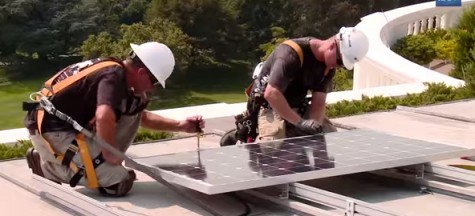After an absence of nearly 30 years, the Obama administration finally installed and fired up a new 6.3 kilowatt solar power system on the White House roof. Officials claimed that the entire system, while not disclosing which US companies supplied the parts, is American-made, including the modules, panels and the inverters that convert the electricity to alternating current for use inside the White House. They also pointed out that the system was the "typical size for an American house."

While largely symbolic and meant to convey Obama's commitment to renewable energy, the new state-of-the-art system couldn't be more different from the 32 panels installed in 1979 by the Carter Administration. At the time, expensive, relatively inefficient solar cells were usually the domain of telecommunications satellites and government programs like NASA's orbiting Skylab. Carter's simple, early solar collectors - which measured three meters long, one meter wide and just 10 centimeters deep - merely absorbed sunlight to heat water inside, which was then sent downstairs to be used in the staff cafeteria. In 1986 the Reagan administration quietly dismantled the White House solar panel installation while resurfacing the roof. Since the Carter era, solar technology has improved so much that any homeowner, with no upfront cost, can have companies like Solar City install photovoltaic modules so powerful that they would make a Skylab astronaut green with envy. And even though solar thermal and photovoltaic technology provide less than 0.1 percent of the energy used in the US, solar panels like Obamas's are popping up on roofs all over the country. Every four minutes a small business or homeowner installs solar, and installations in the US have surged by 418 percent over the last four years, for a total of more than 12,000 megawatts of solar power nationwide. The administration also issued new efficiency rules for electric motors and commercial walk-in freezers and coolers that are expected to cut carbon emissions by about 158 million metric tons and save consumers over $26 billion through 2030, according to the White House. As part of a growing trend, Google, Ikea, Apple, and a wide swath of corporations also announced efficiency measures that represent the equivalent of 850 megawatts of solar power deployed - enough to power 130,000 homes. At the same time, Walmart also pledged to double the number of on-site solar energy projects at its US stores, Sam's Clubs, and distribution centers by 2020.


